Underground cemeteries of New York
Categories: North America
By Pictolic https://pictolic.com/article/underground-cemeteries-of-new-york.html"Today I want to tell you about one of the most unusual cemeteries in New York. Not even about one, but about two cemeteries. They are located in neighboring neighborhoods, have similar names and are equally difficult to visit. It is not surprising that many people confuse them or think that the cemetery is one. Although, I think that most of them have never heard of them at all," says blogger samsebeskazal.
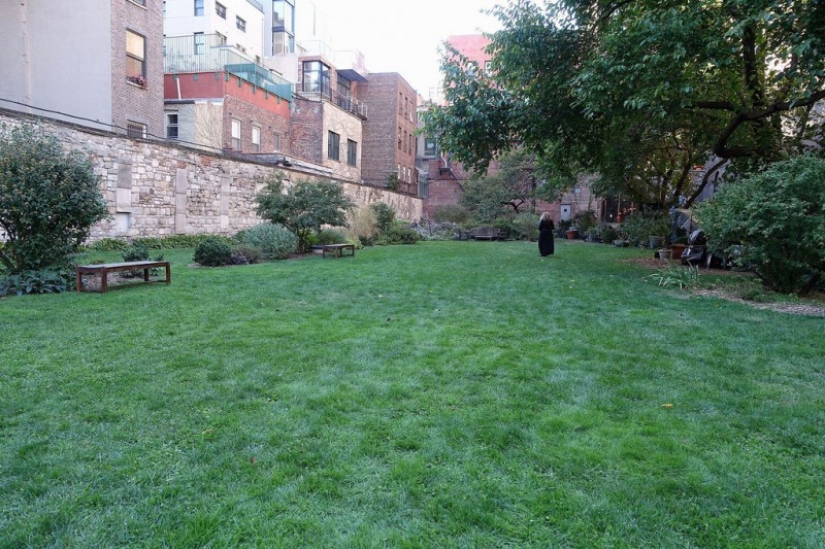
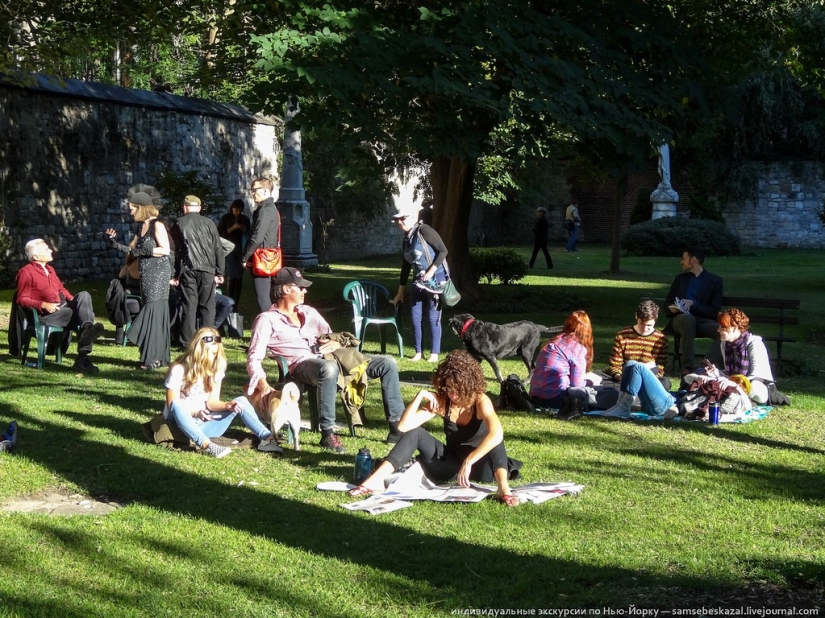
There are two old cemeteries on Manhattan Island in an area called the East Village. One is called "New York Marble", and the second is "New York City Marble". Their main feature is the technology of burial. The difference from any other is immediately visible. The photo shows a cemetery where more than 2,000 people are buried. And almost all of it is in the frame.
With various epidemics that claimed many lives, everything was more than fine at that time. Cholera, yellow fever, etc. A large epidemic of yellow fever occurred in 1793 in neighboring Philadelphia, which at that time was the capital of the United States. Then about 5,000 people died from the disease. And this was about 10% of the city's population. In 1798 , the same attack fell on New York. 2086 residents died there within a few months. Spikes happened later, but that epidemic was the most serious in the history of the city. People who lived at that time had little idea of the causes of such diseases and even less of the ways to treat them. The reasons were looked for in everything possible: rotten vegetables, spoiled coffee, West Indies who came to New York. Someone said that the appalling living conditions in slum areas were to blame (which was partly true, but not the reason). But mostly it was all fantasy, and one idea was crazier than the other. One newspaper man wrote a long article explaining that the cause of the yellow fever epidemic in New York was the eruption of Mount Etna in Sicily. It was only in 1881 that the theory was put forward that yellow fever was transmitted by a certain type of mosquito, and only in 1900 it was scientifically proven. Cemeteries located in densely populated areas of New York were considered one of the sources of the spread of diseases. This was the reason for the closure of several existing ones with the transfer of burials outside the city. The only problem was that this line was constantly moving south, absorbing more and more cemeteries every year. Burials below Canal Street were banned in 1813. By 1851, the ban had spread to all areas south of 86th Street. An exception was made only for private crypts and some church cemeteries. Most of the burials were moved to Queens and Brooklyn, and the former cemeteries became city parks (Washington Square, Union Square, Madison Square and Bryant Park are all former cemeteries).
The New York Marble Cemetery was established in 1831 and quickly became popular (if such a word is appropriate for such a place), as well as commercially successful. Commerce meant order and well-grooming, which was so lacking at that time, and the technology of burial made the cemetery epidemically safe. So, in any case, they thought then. The owners of the New York City Marble, opened a year later, simply adopted a successful business model and, having bought a plot of land in a neighboring block, opened exactly the same, adding only the word "City" to the name. Both cemeteries were founded solely as profitable enterprises, as a result of which they had no confessional affiliation and were open to everyone (well, almost everyone), which only added customers to them in such a multinational city as New York. Being business enterprises, they were planned in such a way as to extract maximum profit from a small plot of land. The high cost of land in Manhattan led to the fact that people began to replicate the plots upwards, building taller and taller buildings. Cemeteries, by virtue of their specificity, began to grow downwards. The task that faced the people who organized the New York Marble Cemetery can be formulated as follows: how to arrange the maximum number of burials on a small area, and even make them safe for the health of residents of surrounding neighborhoods? The solution was found in the form of spacious stone crypts, arranged below ground level. For their construction, a pit was dug, the floor, ceiling and strong walls were equipped, and then covered with earth. It turned out something like a basement, but only without floors from above. For access inside, a special manhole was equipped (one for two crypts), which was closed with a stone lid.
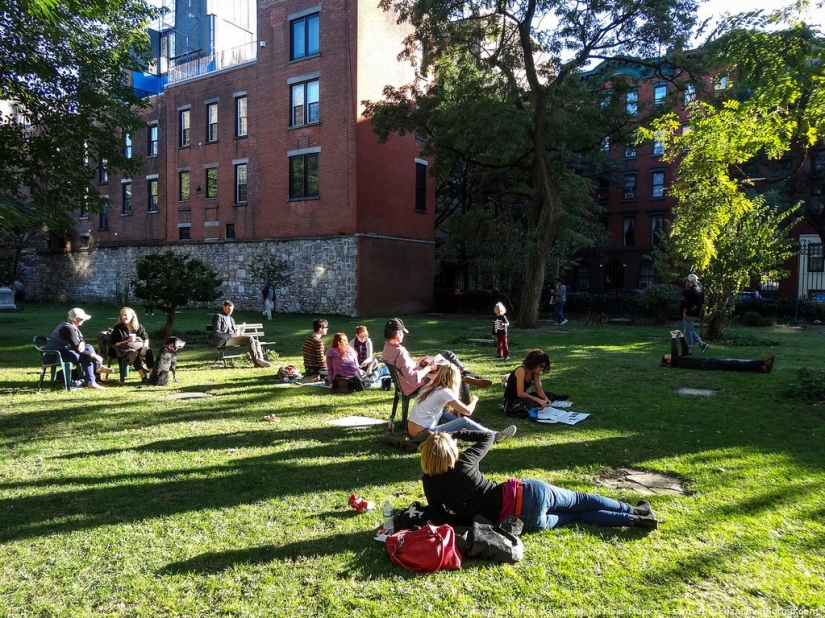
Let's start with the New York Marble. It's not so easy to find him. It is located in the courtyard of a residential quarter with dense buildings. It is not visible from the street, and you can only get to the territory through a narrow and almost imperceptible passage from Second Avenue. But even if you know where the entrance is, it is unlikely to help you. In 99 cases out of 100, you will only see a locked gate. There are only a few days a year when visitors are allowed into the cemetery.
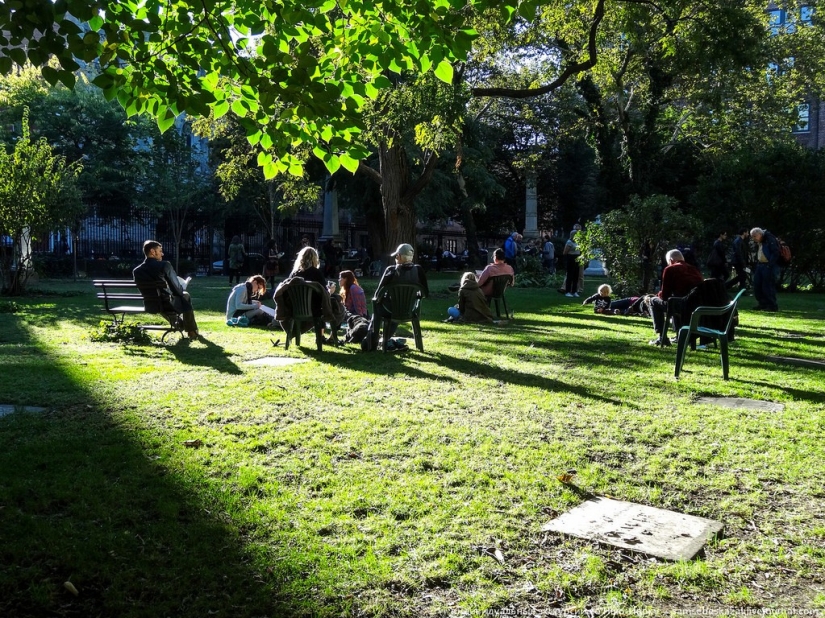
If you do not know that there is a cemetery somewhere behind the houses, then it is almost impossible to guess about its existence.
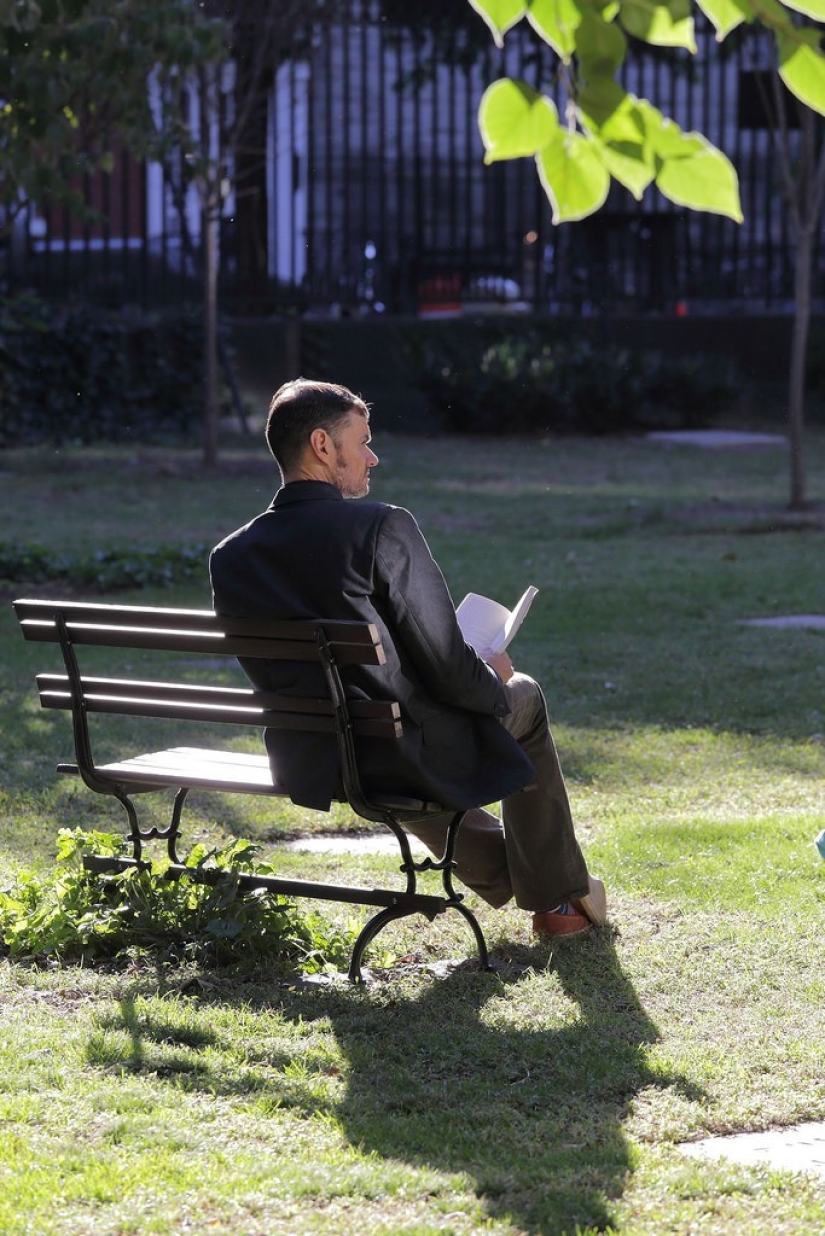
And even after going inside, you will most likely think that you have entered a small garden.
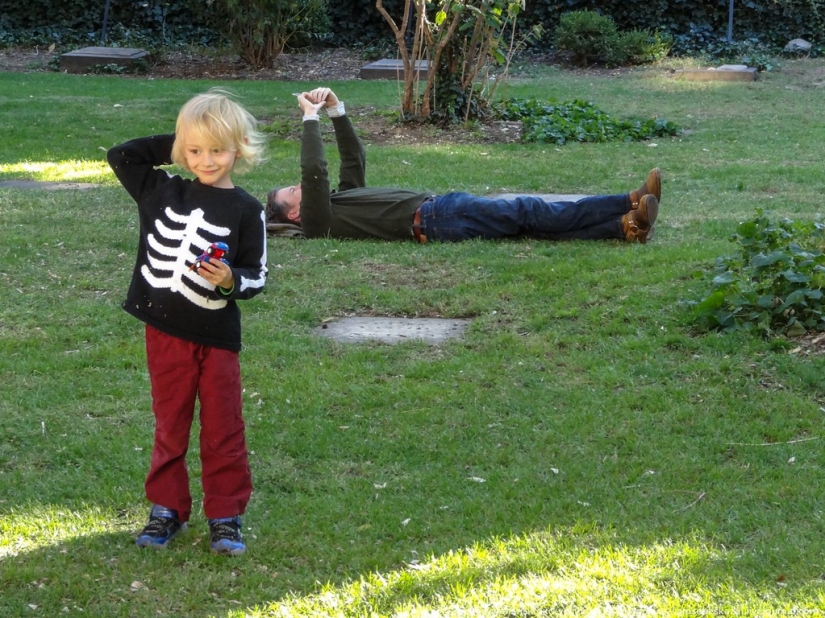
Beautiful green lawn, bushes, trees, benches, garden tools. What cemetery?
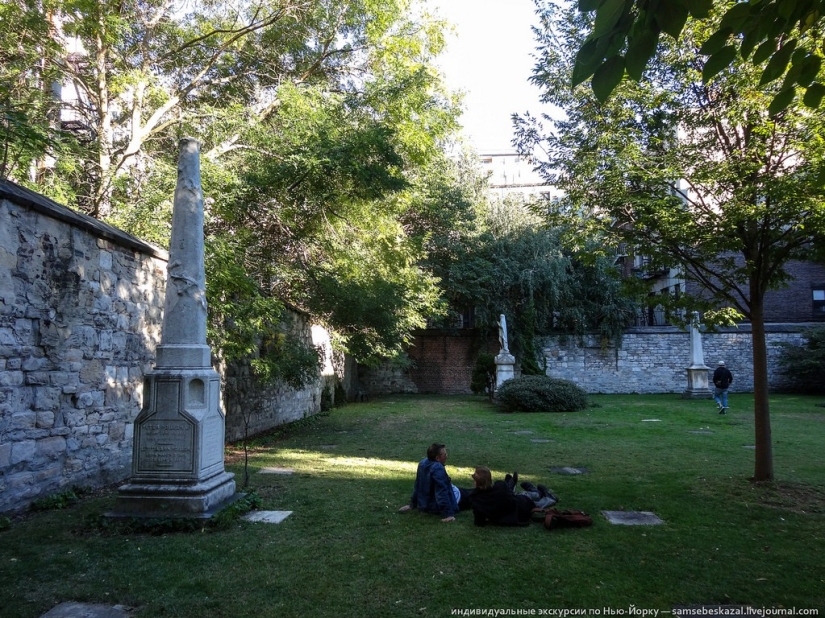
A casual passerby will be very surprised to learn that more than two thousand people are buried here. But where are they all?
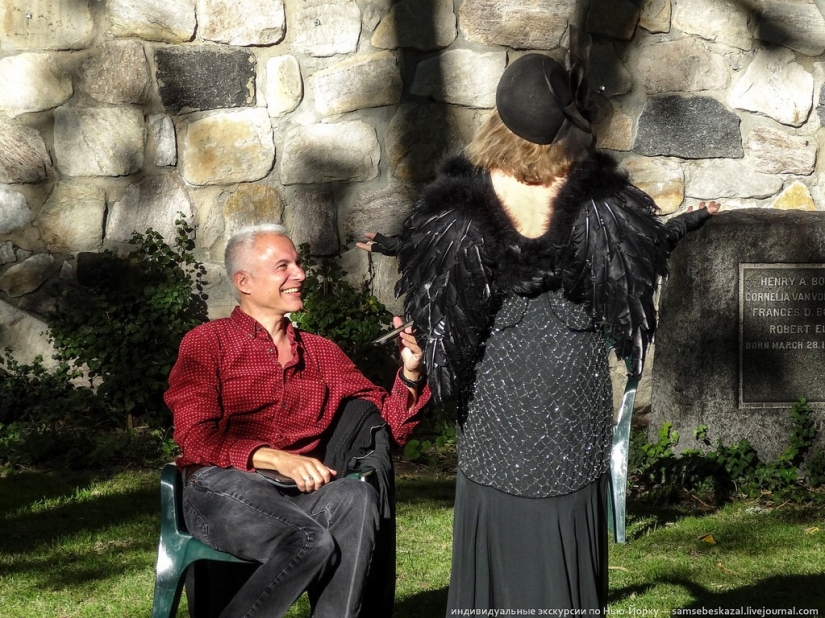
The fact is that the cemetery is completely underground. The stones with inscriptions in the wall are not tombstones, but tablets displaying the number of the underground crypt and the names of its owners. On the territory of 17 acres there are 156 underground crypts, in which 2080 people rest. The crypts and the wall around the cemetery are made of marble. The same one that was used in the construction of many famous buildings, including the Washington Capitol. Hence the name — "Marble cemetery".
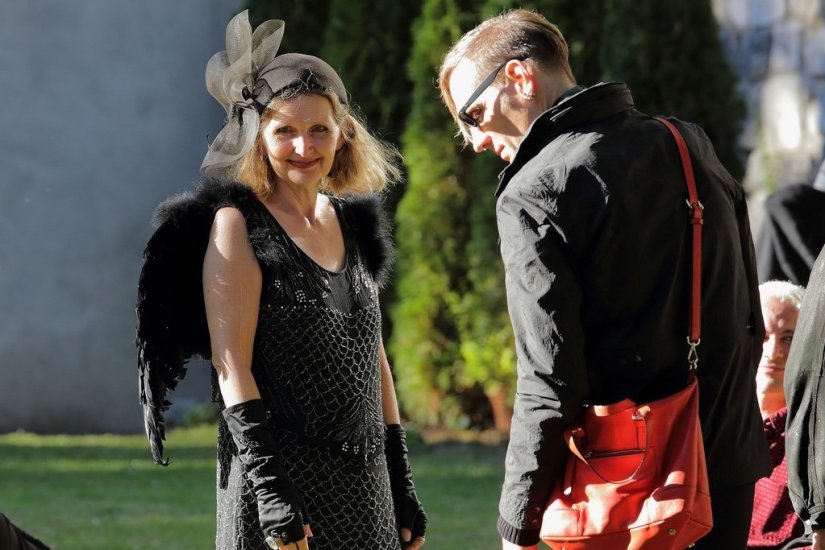
The tablets are also made of marble, which slowly collapses under the influence of time and weather. Therefore, some of the names are no longer readable.
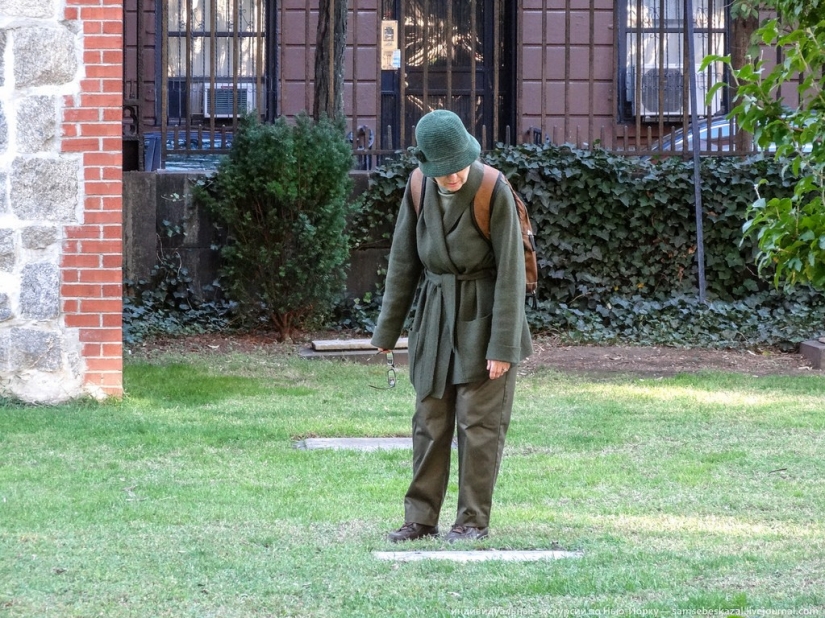
Building around.
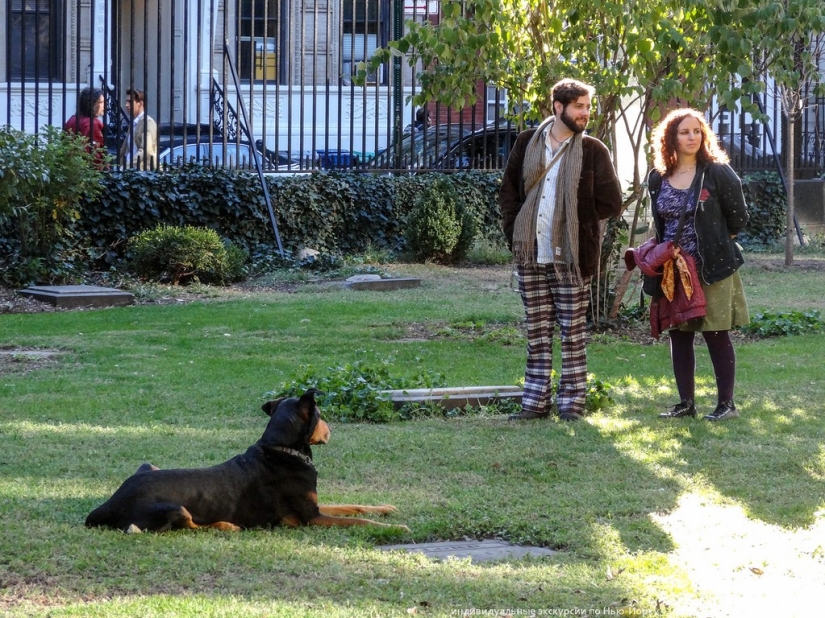
Interestingly, they have hardly changed over the years. Here is a photo taken in 1910.
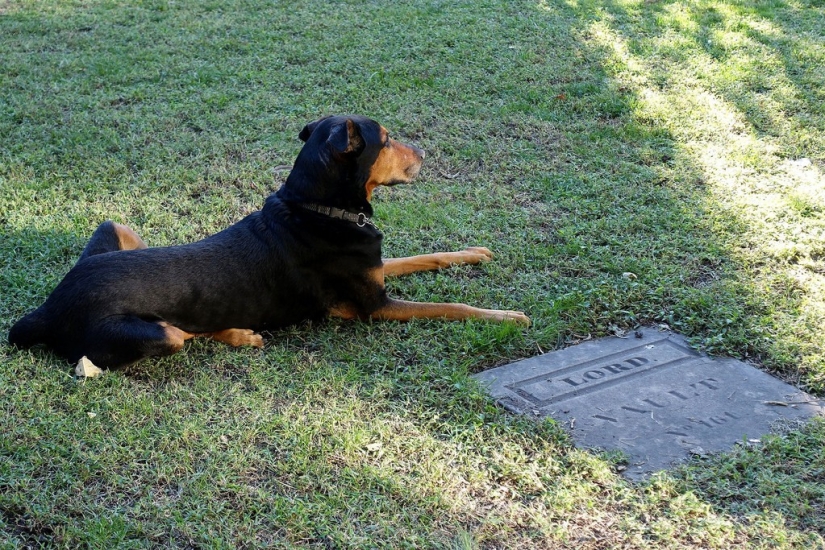
And this was done the other day.
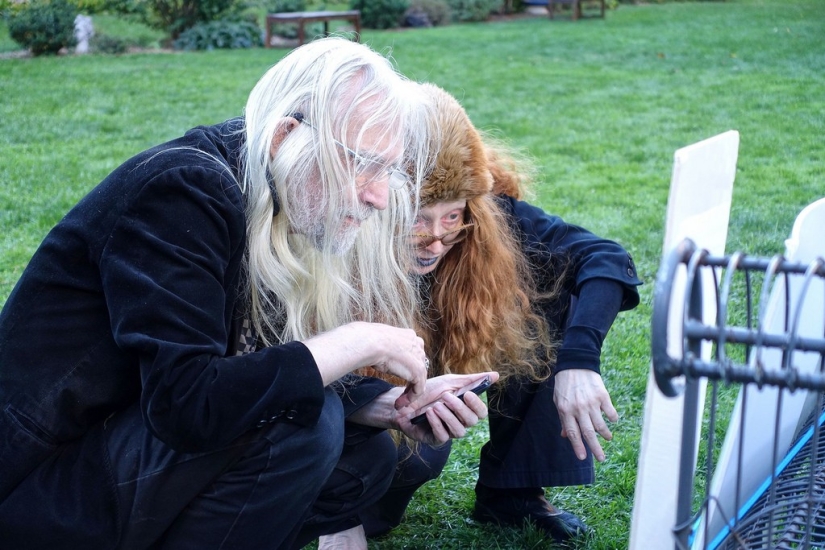
In the far corner there is a reconstruction of the wall, and you can consider the building material. What the crypts look like, you will see below.
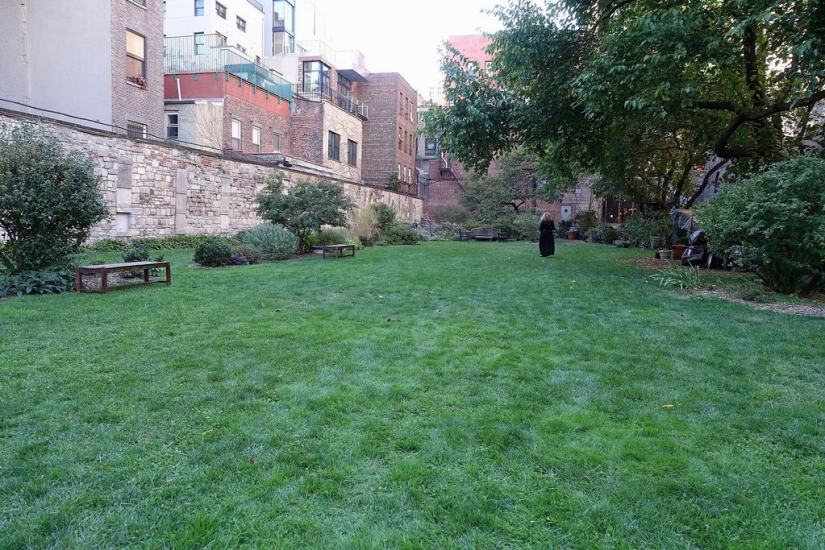
At the end of the 19th century, the heirs of the owners of the crypts seriously considered the option of transferring the graves and selling the land in order to equip a school and a children's playground on it. Today, there are two empty crypts for sale at the New York Marble Cemetery. They ask for $500,000 for each one. The owners of the cemetery are the heirs of the owners of the crypts. Their great-great-great-grandchildren. They also have a rare opportunity to be buried in the lower part of Manhattan. The rest of New Yorkers are deprived of it. The only active cemetery on the island (Trinity) is located north of 153rd Street. Interesting fact. During genealogical research, it was found that only 3% of the heirs of the owners of the crypts retained the surname of their ancestors.
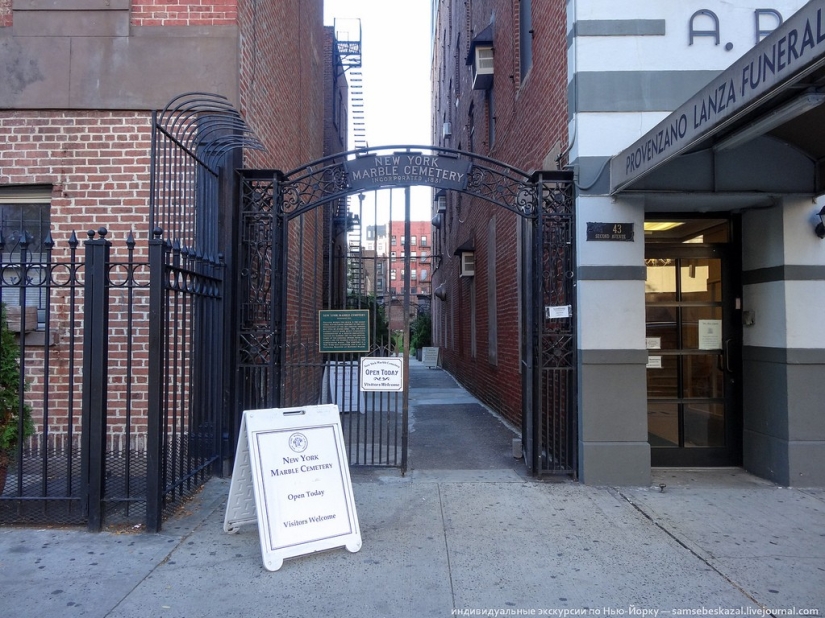
This is the New York City Marble Cemetery, which is located in the next block. It is larger in area (37 acres) and is clearly visible from the street. Getting on it, however, is just as difficult. It is opened only a few times a year.
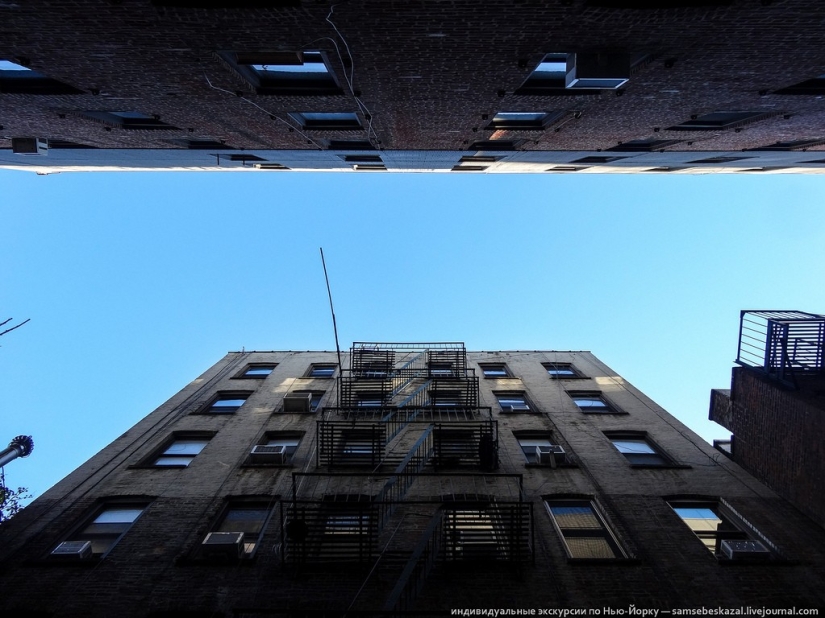
Its main difference is that the stones with crypt numbers are installed not in the wall, but on the ground. Just between them is the entrance covered with earth.
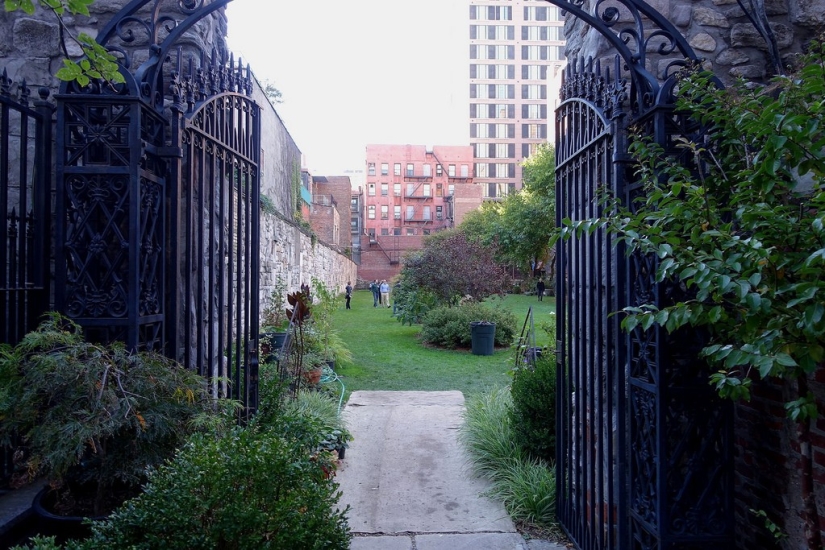
There are also steles installed instead of numbered stones at the request of some crypt owners.
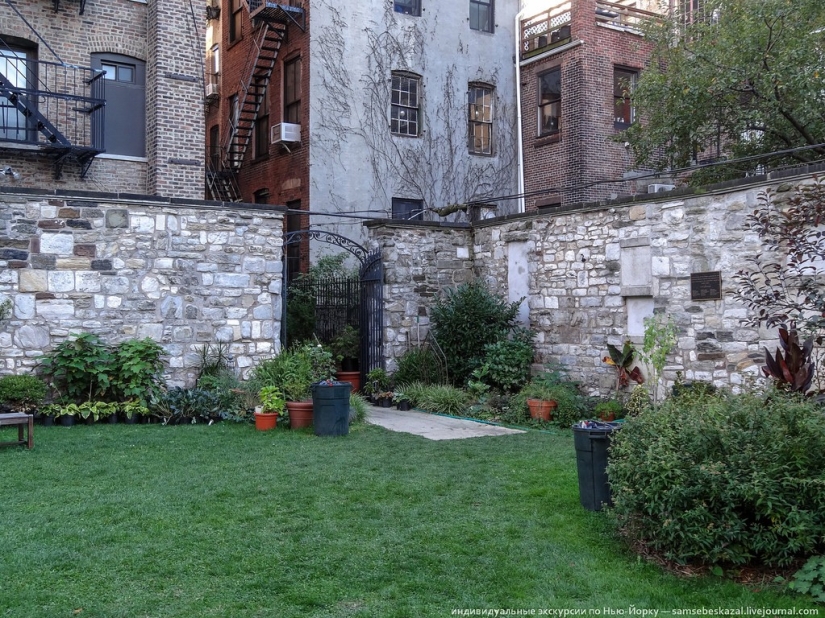
Crypt number 137. There are 258 of them in this cemetery.
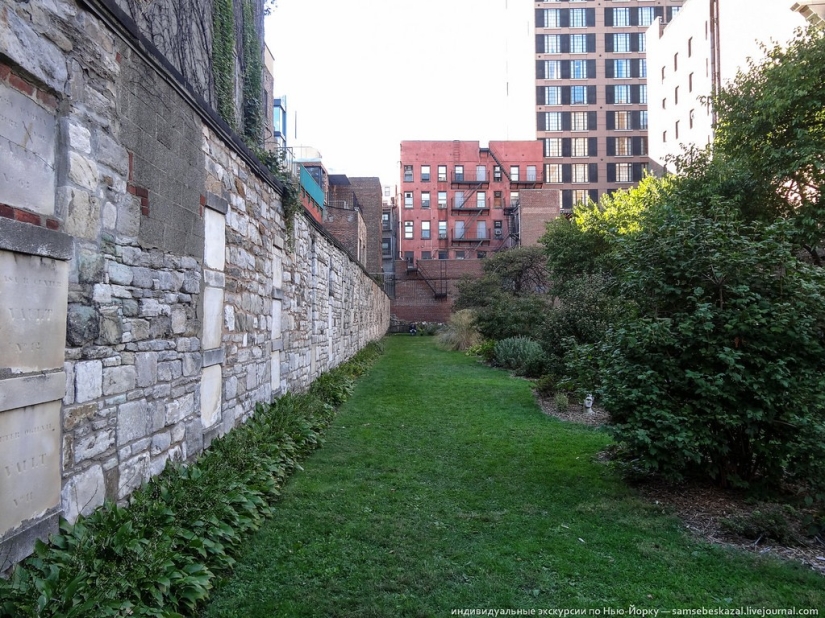
Number 150, belonging to a certain J.S. Winston.
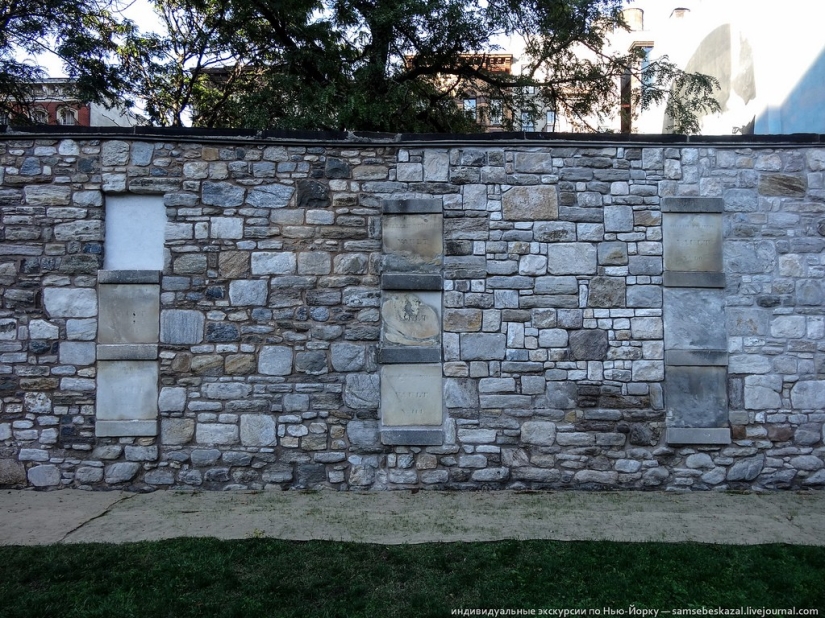
Crypts in marble cemeteries have never belonged to the upper class of New York society. The richest had country estates where they could hide from the hustle and bustle of the city (and from the outbreak of the epidemic). Private family cemeteries were built next to such estates. Mostly rich merchants, shipowners and lawyers are buried in marble cemeteries. People are not poor, but far from the cream of society. There were exceptions. In 1825, the fifth President of the United States, James Monroe, was buried there. His son owned one of the crypts. 27 years later, in 1858, his body was reburied at Hollywood Cemetery in Richmond, Virginia.
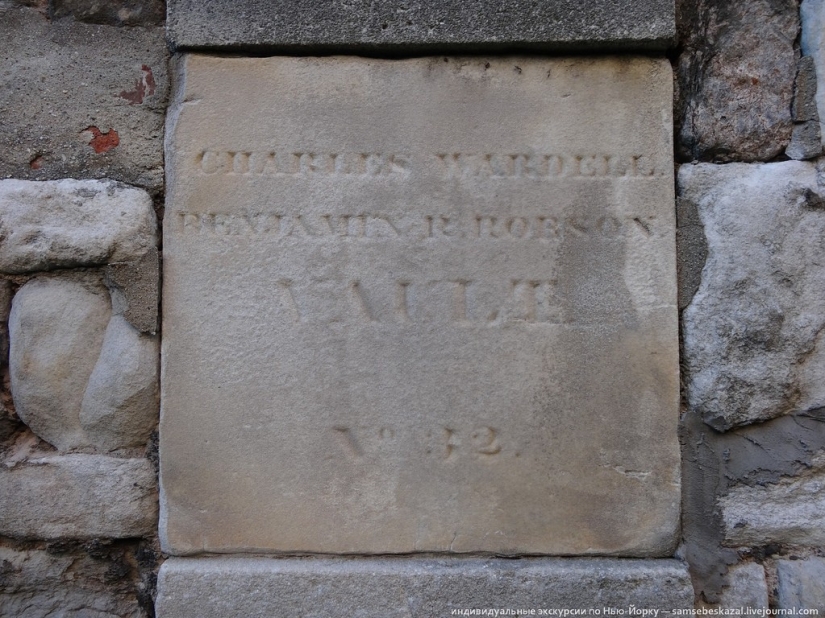
By the 1860s, the number of funerals in marble cemeteries had decreased dramatically. The Greenwood Cemetery was opened in Brooklyn, which quickly became fashionable thanks to its park landscapes and cozy winding paths. In addition, the demography of the district has changed. Rich residents and the middle class moved to the neighborhoods to the north, and the area around the cemeteries was quickly populated by poor immigrants who came to America for a better life and had no money to live, let alone for funerals. During this period, about a quarter of all burials from marble cemeteries were transferred to other cemeteries. Most on Greenwood in Brooklyn and Woodlawn in the Bronx. By the 1860s, burying on them had almost ceased. The last burial was made in 1937. Since then, they have been standing there, surrounded by dense buildings and closed to visitors.
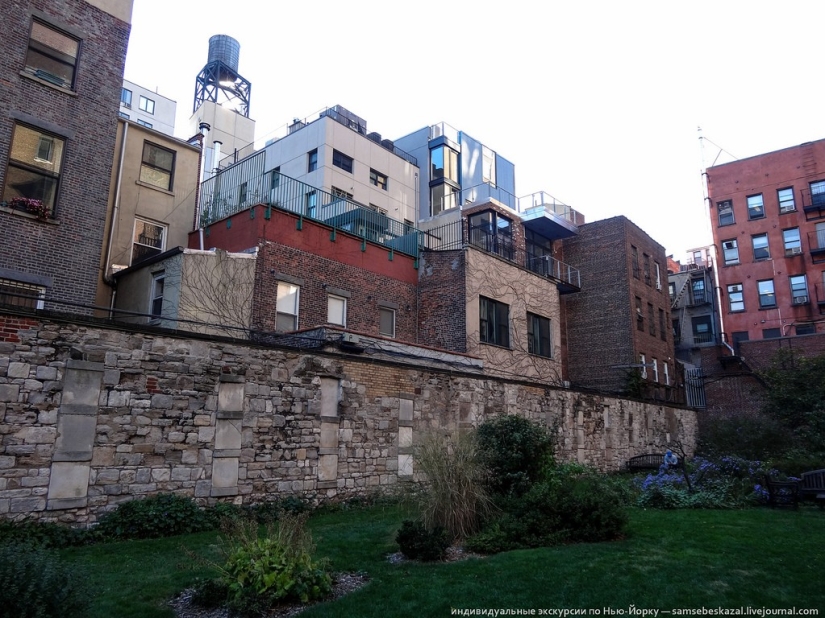
What the crypt looks like. To get inside, you need to remove the turf on the site, dig a hole about 10-20 centimeters deep and find a stone slab covering the entrance.

Then, with the help of a winch and ropes, lift and remove the heavy lid, under which a rectangular well with stone walls and two stone doors will be found.
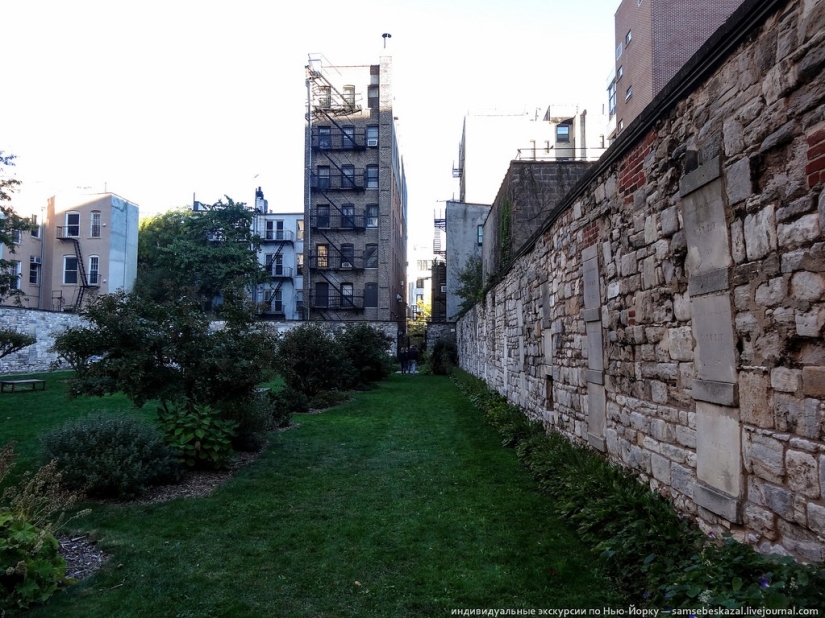
Each of them leads to a crypt. Interestingly, some doors need a key.
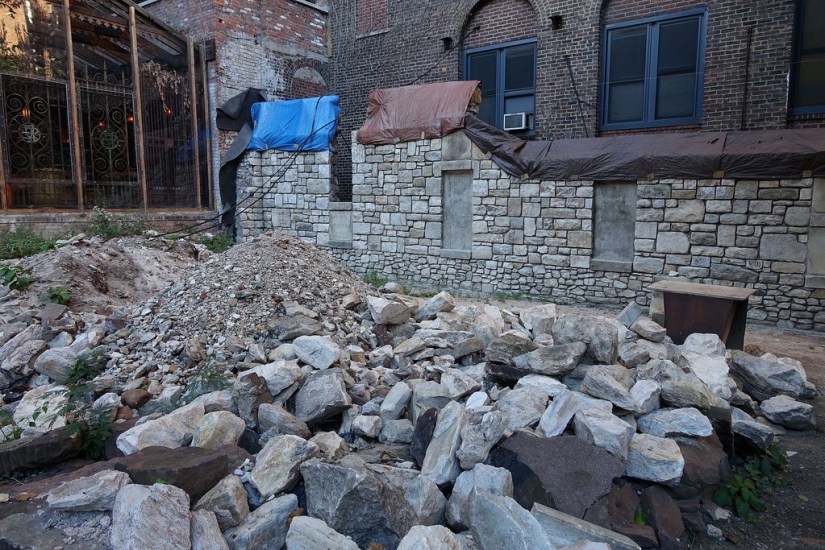
Inside there is a cramped space with vaulted ceilings and shelves on which the decayed remains of coffins, wreaths and other things lie. The walls, floor and ceiling of the crypts are made of light Takahoi marble.
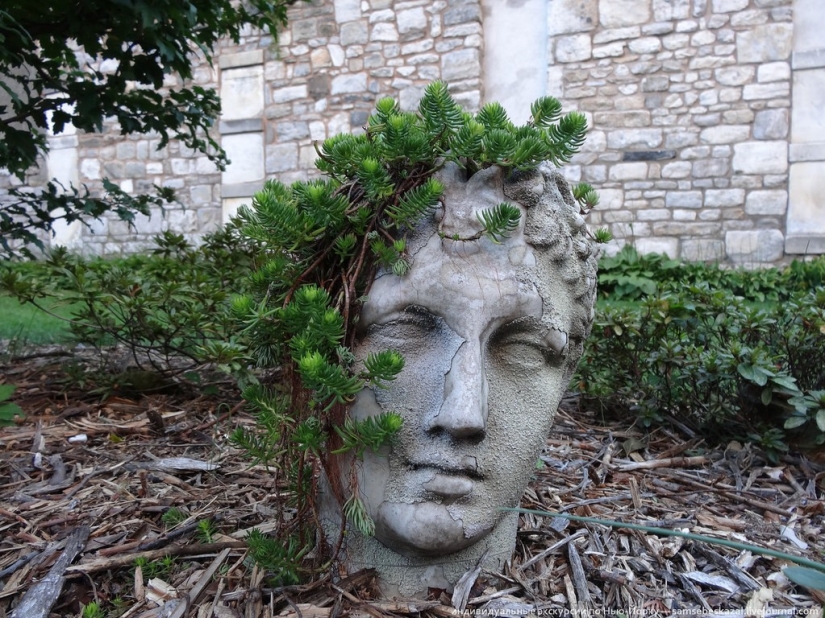
Diagram of the crypt. They write that once every 10 years, new dead can be brought to the cemetery.
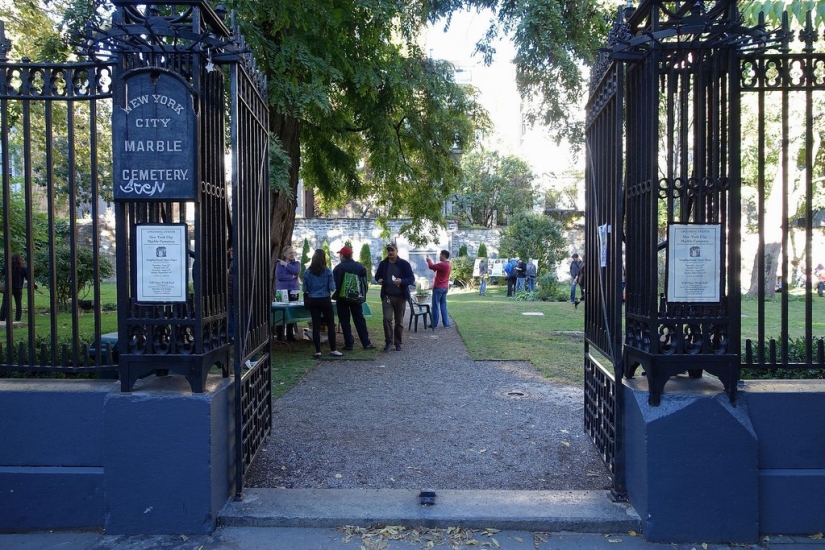
Only cemetery workers could get into the crypt itself. Grief-stricken relatives and the priest remained upstairs. This is an old mechanism that was used to open the crypts.
13% — died at the age of 6 months, 18% — died at the age of 6 months to 2 years, 15% — died at the age of 2 to 4 years, 7% — died at the age of 4 to 10 years, 4% — died at the age of 11 to 20 years, 11% — died at the age of 21 to 30 years, 9% — died at the age of 31 to 40 years, 7% — died at the age of 41 to 50 years, 5% — died at the age of 51 to 60 years, 5% — died at the age of 61 to 70 years, 4% — died between the ages of 71 and 80, 2% — died between the ages of 81 and 90, 0.5% — died over the age of 90.
That is, most were children. 57% of those buried on the "New York Marble" did not live to be 20 years old. 53% did not live to be 10 years old.
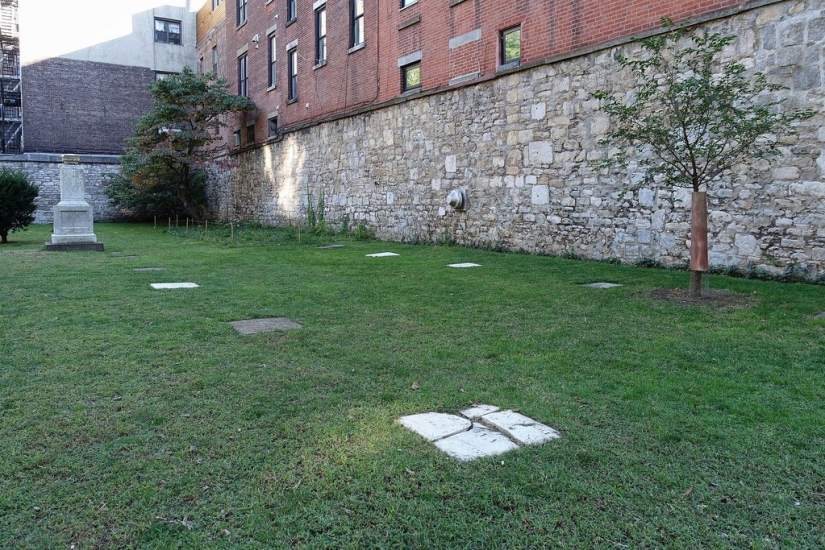
After you have seen what is happening below, let's look at what was happening above. The photos were taken during OHNY — the city open day, when you get a chance to get to places where it is very difficult or simply impossible to get to on a normal day. Marble cemeteries were in this year's program.
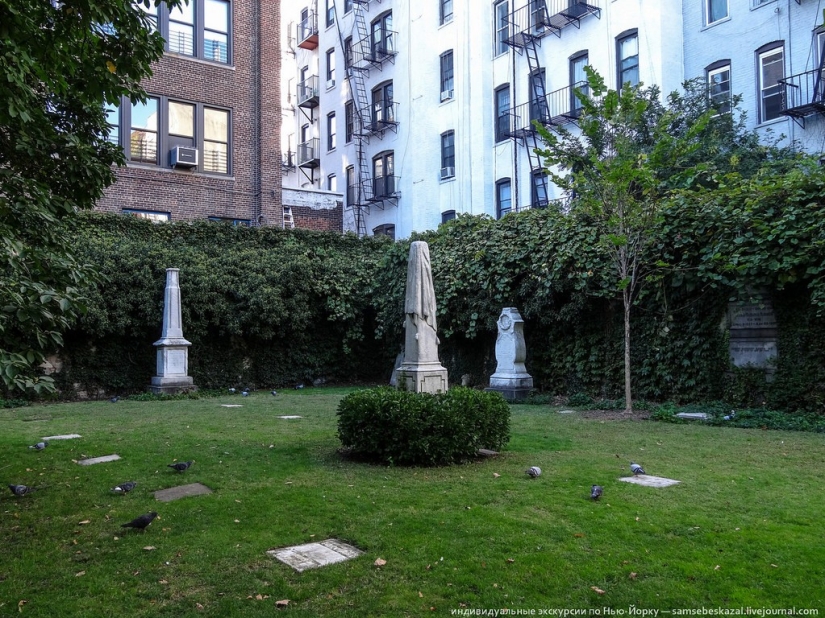
Pay attention to the fact that the people who have come behave as if they are not at the cemetery, but at a picnic in the park. People are lying on the grass, walking dogs, reading a book or just dozing in the rays of the warm autumn sun. I can't imagine something like this in a cemetery in Russia, we have such a different mentality and attitude to death. Perhaps the age of the burials and the fact that there are no graves affects here, but a similar picture can be observed in any old New York cemetery. Especially during any interesting events.
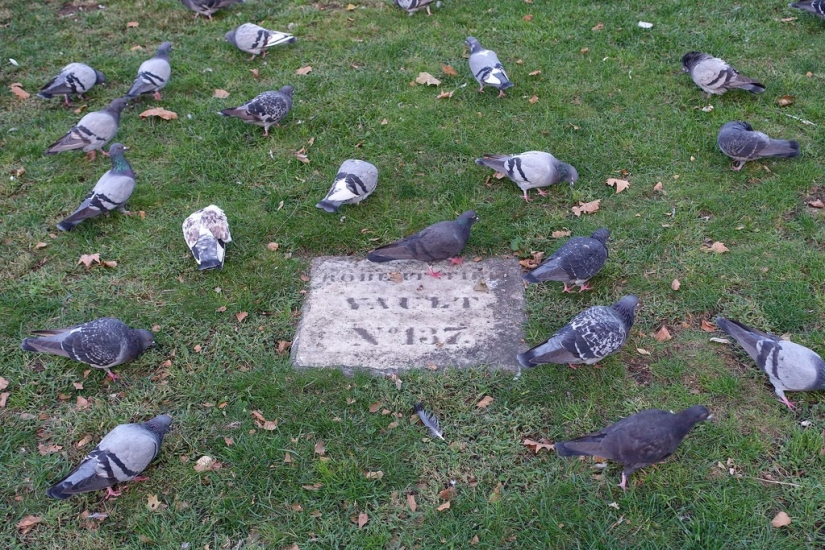
Funny detail. At the entrance to the New York Marble Cemetery, visitors are greeted by a sign calling for respect for the deceased and not to touch the walls. The following sign says that the cemetery is rented out for various events such as weddings, barbecues, fashion shows, concerts, cocktail parties, presentations and other things. I still don't understand why touching the walls is disrespectful, and eating and drinking over the remains is normal.
Keywords: Cemetery | New York | Burial
Post News ArticleRecent articles

Girls from our collection could easily compete for the title of "Miss universe". And this despite the fact that they are all ...

Young Milla Jovovich in the arms of Michael Jackson - this shot from almost thirty years ago, published on the actress’s ...
Related articles

Bruce Gilden is a legendary photographer, famous for his impressive portraits of ordinary passers-by on the streets of New York. He ...

The stunning photochromic postcards released by the Detroit Publishing Company showcase 1900s New York in all its colorful splendor.

Serial killer David Berkowitz (David Berkowitz) for a year terrorized the people of New York. He shot six people to death and ...

From explosions at the slightest collision to endless drifts without a scratch, cinema has long since devised its own laws of ...